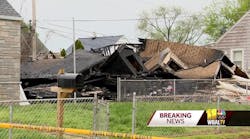Thirty years ago, when I was first asked to be the public information officer for our department, there were just a few media outlets that I worked with on a regular basis—four television stations, three radio stations that had news, one large newspaper and several smaller neighborhood publications.
Today, there are eight regular local TV stations with news, two radio stations with regular news and one large circulation print newspaper, as well as now several streaming radio stations, several Internet media outlets, numerous publications and new digital TV stations coming online as well.
So just who is the media today? It’s anybody who says they are the media. The media is not an exclusive club; it’s anyone who gathers information and disseminates it as news. That means it can be large commercial TV stations, a large circulation newspaper or even a small newsletter for a local school or homeowners association. There are also small streaming radio stations that serve just a few neighborhoods in the community. Some others include Internet newsletters and bloggers. If they say they are from the media, you should treat them as such. It is not necessary for them to “prove it” or provide you with identification (unless it is required by local laws or ordinances). In today’s world, they are all the media.
Another type of media is fire buffs or fire photographers. Unless they have special arrangements made with your department to be the photographer, they should be treated as all other media is treated. If you grant them special privileges, other media outlets are going to want you to extend them the same treatment.
Spread the word
In the past, information was disseminated through interviews over the phone or in person or through media releases, which were disseminated either electronically (usually email) or by fax. This often led to situations where some media outlets did not get the information.
Social media has helped with getting information out more consistently. With social media, I can post a message to Facebook or Twitter to advise the media that a media release has been posted. I use the email system as I have in the past to send out my media releases as well. I then post it on our department Facebook page. Many times, I will post to Facebook photos or video that I may have taken on scene. If the media was not able to respond to the incident, they not only have the information, they also have something visual. It is not unusual to see my photos or video on the local news along with the story after they downloaded it from our Facebook page.
Equipment is also different now. Instead of large bulky cameras or recording equipment, many are using smaller digital or smart devices. It is now common to give an interview to someone using a smartphone or tablet. This way they can instantly edit and then upload their information and get it disseminated in minutes.
As the PIO, you may be asked to appear on a radio or TV show to talk about fire safety or about your department. Don’t be surprised if it is at a college or local high school, possibly in a trailer that was converted into a small streaming radio station or a small house that was made into a studio. They are all media, and your job is to pass on the information through whatever media is available.
Tips to remember
When working with the various media outlets, treat everyone the same regardless of what type of media they are. If you set up a media staging area, all media should have access to it. I usually send out a Tweet advising where the media staging area is so they know where to meet.
Additionally, make sure all of your media sources get the same information at the same time. Don’t extend certain privileges to one or a few media and not the rest.
Invite the media to follow you on social media so they learn how to get information from you, especially during breaking events.
Each media type usually addresses a certain audience. Make sure your delivery conforms to their needs. An interview for a high school is going to be different than for a senior citizen group.
Final thoughts
These are exciting times, as even newer media will no doubt become available in the future. The PIO should learn the different types of media and how to work with them to stay successful in getting the information out.






